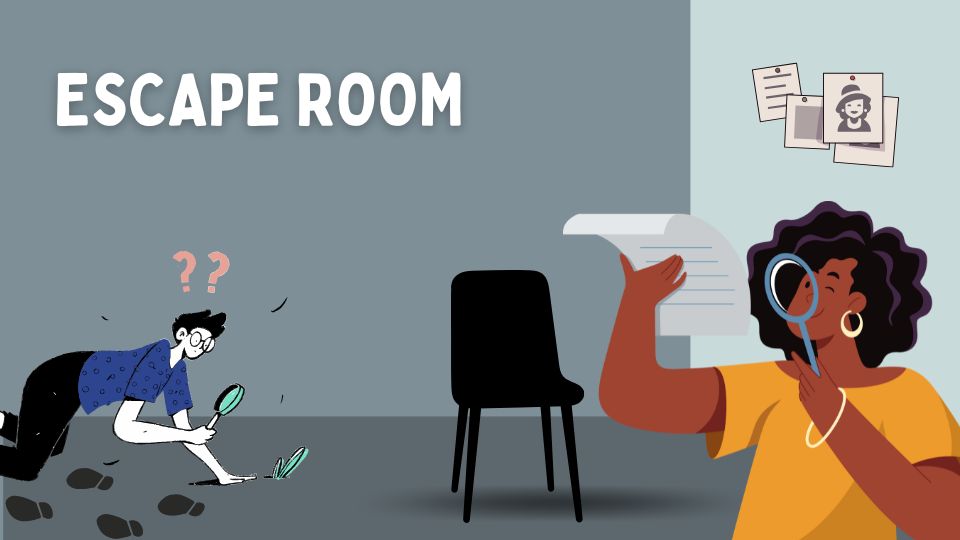
Craft Your Escape Room Marketing Strategy with Our Free Template
Escape rooms have rapidly become one of the most popular forms of entertainment. These interactive experiences, in which users solve riddles to “escape” within a defined time, have piqued the curiosity of those looking for distinctive and interesting activities. Escape rooms are becoming a popular choice for friends, families, and business team-building activities all around the globe.
However, the mere act of establishing an escape room business does not guarantee success despite its increasing prominence. The market is highly competitive, and even the most innovative escape room may encounter difficulty in attracting and retaining consumers in the absence of a well-crafted marketing strategy.
If you want your escape room business to remain ahead of the competition, you need a great marketing strategy. This article will show you how to construct one that reaches the correct people, has clear objectives, and can be measured for success.
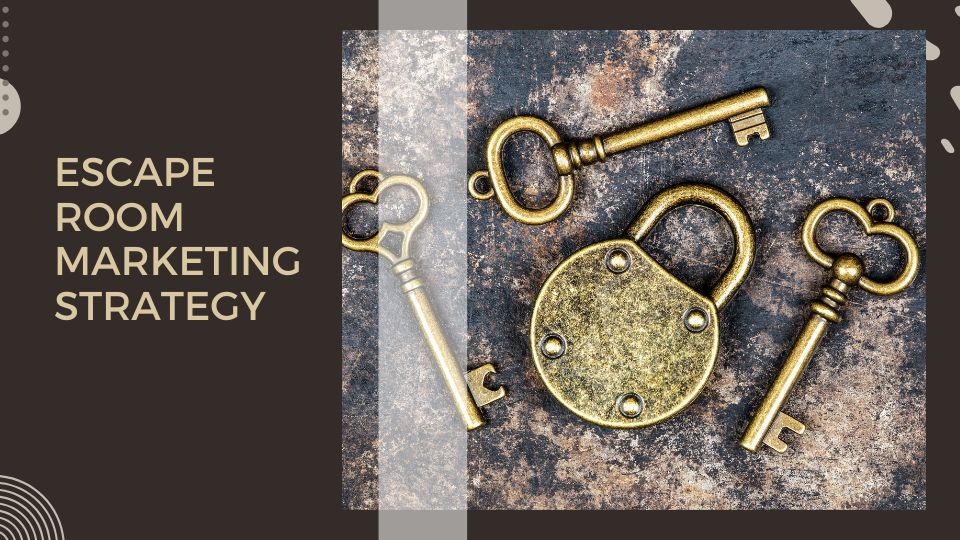
In this article, you can expect to learn:
- Methods for identifying and understanding your target audience
- The necessity of establishing explicit marketing objectives
- Key tactics for formulating an effective marketing strategy
- Methods for developing and launching a marketing campaign
- Access to a detailed escape room marketing plan template
With a solid knowledge of these, you’ll be able to proceed to the next essential step: determining your target audience. This is where each good marketing strategy starts. Let’s look at how to discover and approach the right audience for your escape room company.
Understanding Your Target Audience
Understanding your target demographic is, once again, a critical component of any marketing strategy. Knowing who your customers are and what their needs are will allow you to tailor your marketing efforts to cater to these needs, which, in turn, improves your ability to attract and retain them.
The initial step is to identify the primary demographics of the escape room industry. Most escape room enthusiasts fall within a specific age range and share common interests. These insights can guide your marketing strategy.

Consider the following factors:
- Age: Escape room patrons are generally aged 18 to 35. However, family-friendly escape rooms may appeal to a wider age group.
- Interests: A lot of people who play escape rooms like challenges that make them think and use their brains, like games and puzzles.
- Group Type: Escape rooms tend to be popular among corporate groups, families, and families seeking team-building activities.
In addition to researching demographics, you should do local market research to find trends and preferences unique to your location. This involves studying rivals, determining demand, and identifying any market gaps that your escape room may cover.
Here’s how you can do it:
- Analyze Competitors: Visit other escape rooms in your area. Note their pricing, consumer reviews, and assets and weaknesses.
- Survey Potential Customers: Gather feedback from your community. Be sure to inquire about the aspects of escape rooms that they find enjoyable and the areas in which they would like to see improvements.
- Use Social Media: Interact with users on social media platforms like Facebook and Instagram. Observe their interactions with other escape room profiles and related content.
Knowing and understanding your target audience will allow you to be better equipped to tailor marketing campaigns that attract them. As a bonus, laying this groundwork will make the following stage in developing an effective marketing strategy for your escape room much easier: setting attainable and realistic marketing objectives.
Setting Clear Marketing Goals
Establishing specific marketing objectives follows an in-depth analysis of your target demographic. With these objectives in mind, you can focus your marketing efforts, know what you’re working for, and make better judgments. Without clearly defined objectives, it’s easy to lose focus and miss out on chances to build your organization.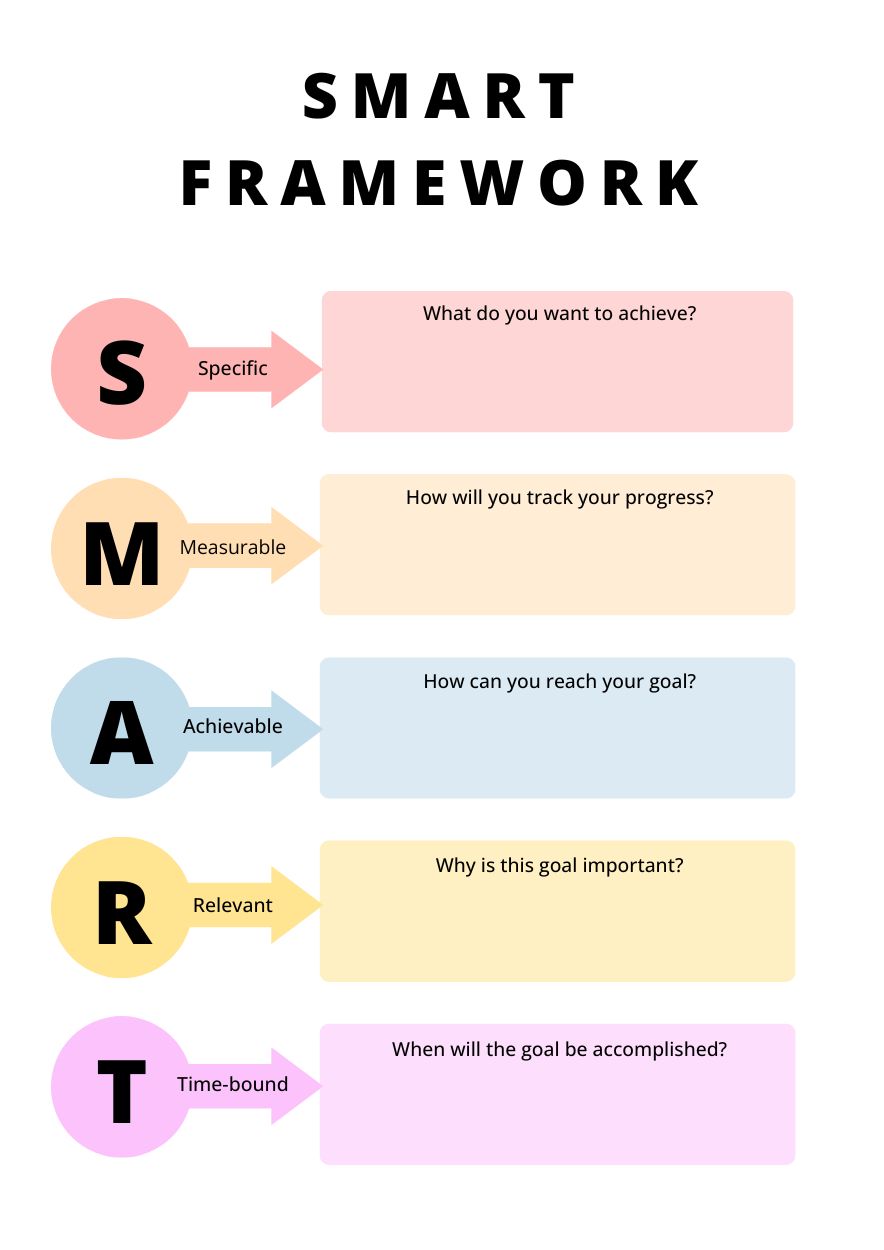
The SMART framework is a great tool for creating successful marketing objectives:
- S – Specific: Clear and specific objectives should be established, outlining precisely what you intend to accomplish. Instead of a broad objective like “increase bookings,” strive for something more specific, such as “increase weekday bookings by 20% over the next three months.”
- M – Measurable: You need to be able to track your progress. If your objective is to increase social media engagement, specify the type of engagement you are seeking—whether it be an increase in likes, shares, or comment. Set clear numerical targets.
- A – Achievable: While it’s good to be ambitious, your goals should be realistic and attainable. When establishing objectives, it is crucial to take into account the current market conditions and one’s resources. For instance, while it may be unattainable to double one’s customer base in a single month, it may be feasible to increase it by 10%.
- R – Relevant: For example, if your organization’s primary goal is to enhance profits, you can prioritize marketing objectives that contribute to profitability like boosting conversion rates or upselling additional services.
- T – Time-bound: To make your marketing efforts more productive and to avoid procrastination, set a due date for each objective. For example, you may want to finish a marketing campaign by the end of a given quarter.
Examples of marketing goals for an escape room business:
- Increase weekday bookings by 20% within the next three months.
- Boost Facebook engagement by 15% over the next 60 days.
- Achieve a 10% increase in repeat customers within six months.
- Get 500 people to sign up for your email list during the next two months.
By setting these SMART goals, you can ensure that your marketing efforts are effective and focused.
The Art of Creating a Successful Marketing Plan for Escape Rooms
It is now time to develop a marketing strategy that will enable you to accomplish your marketing objectives. A well-rounded marketing strategy covers multiple channels, ensuring that you reach your target audience wherever they are.
Create a comprehensive strategy that combines both online and offline marketing campaigns so you can attract new clients and enhance customer loyalty. Key components of an effective marketing strategy include:
1. Online Presence
For many people, your company’s website serves as their first point of contact with your brand. It is essential that the website is visually alluring, user-friendly, and optimized for search engines. In addition to enhancing visibility on search engines such as Google, an optimized website also offers a seamless booking experience.
-
- Website Optimization: Ensure your site loads quickly, is mobile-friendly, and has clear calls to action. Incorporate SEO best practices to enhance your rankings for pertinent search terms, such as “escape room near me” or “escape room bookings.”
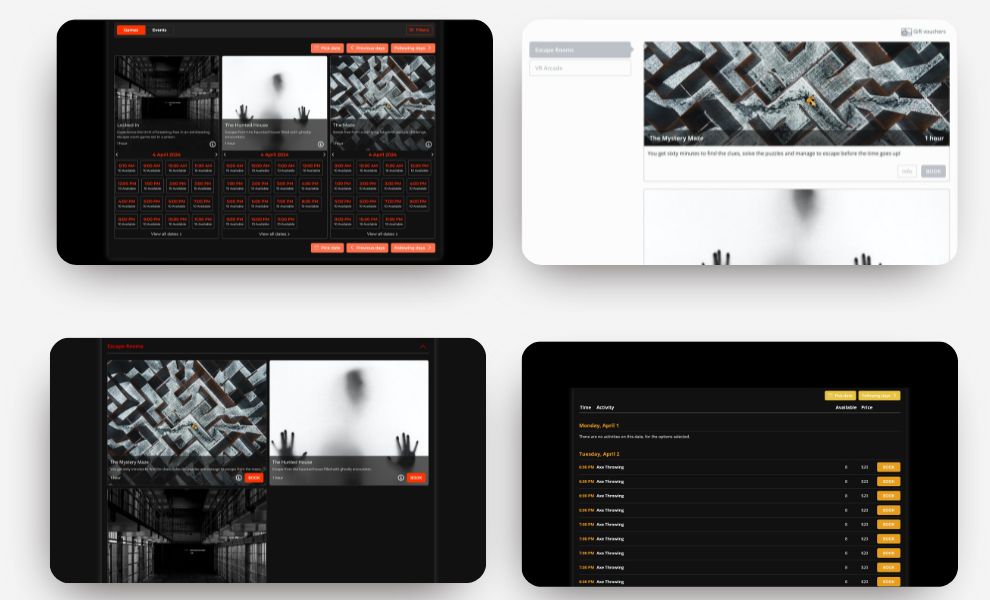
- Google Business: Claim and optimize your Google Business (previously known as Google My Business) listing. Make sure to include high-quality photos/videos and accurate information.
- Website Optimization: Ensure your site loads quickly, is mobile-friendly, and has clear calls to action. Incorporate SEO best practices to enhance your rankings for pertinent search terms, such as “escape room near me” or “escape room bookings.”
- Social Media Marketing: One of the best ways to get your message out to a wider audience is via social media.
Here are some tips on how to optimize your social media marketing:
- Platform Selection: Emphasize platforms with the highest engagement level among your target audience. Facebook, Instagram, and TikTok work well for escape rooms.
- Content Strategy: Post regularly to keep your audience engaged, and use relevant hashtags related to your industry. Photographs and videos of your escape rooms, customer testimonials, behind-the-scenes content, and forthcoming events should be shared.
2. Email Marketing
Email marketing is an affordable way to keep your audience engaged and informed. Sending out newsletters on a regular basis is a great way to connect with consumers and get them to book with you again.

- Building Your List: Collect email addresses from your website, social media platforms, and in-person at your escape room. In exchange for their email address, you may provide them with exclusive content, discounts, or other incentives.
- Frequency and Content: Send emails that provide value to your subscribers. This could include updates on new escape room themes, special promotions, or tips for solving puzzles. Be consistent with your email schedule, whether it’s weekly, bi-weekly, or monthly.
3. Local Advertising
Don’t overlook the power of local marketing. This can help you attract customers who are already in your area and may be looking for something fun to do.
- Flyers and Posters: Distribute flyers and posters in high-traffic areas like malls, coffee shops, and universities. Ensure that they contain a clear call to action, such as a booking link or a discount code, and eye-catching visuals.
- Partnerships: Partner with nearby businesses that cater to your demographic. For instance, you could work with restaurants to provide a “dinner and escape room” package. This may help you reach out to new consumers and add value to your existing ones.

4. Customer Reviews and Word-of-Mouth Marketing
Among the many types of marketing, word-of-mouth ranks high in effectiveness. If your escape room has satisfied clients, they are likely to recommend it to their friends and family, which could potentially increase the number of reservations.
- Encouraging Reviews: Request that a group submit a review on your social media pages, Yelp, or Google after they have successfully completed an escape room. Simplify the process by including direct links. Small incentives, like discounts on their future trips, may also be offered.
- Referral Programs: Develop a referral program that rewards consumers for referring new visitors. This may be an effective strategy for reaching a wider audience without breaking the bank on advertising.

By incorporating these elements into your marketing strategy, you will establish a comprehensive strategy that effectively communicates with your target audience through a variety of channels. Driving traffic, increasing reservations, and establishing a robust brand presence are all significantly influenced by each component.
Creating a Successful Marketing Campaign for Escape Rooms and Putting It Into Action
Now that you have a clear marketing strategy, the next step is to put it into action.
Drive measurable results and optimize the impact of your marketing campaign through meticulous planning and execution. Here’s how:
1. Establish the Objective of Your Campaign:
Begin by clearly outlining the main objective of your campaign: launching a new room, promoting a holiday event, boosting weekday bookings, and so on.
Example Objectives:
- Within the first month, increase the number of reservations for a new escape room theme by 30%.
- Promote a special Halloween event and achieve a 50% increase in bookings during October.
- Drive a 20% increase in social media followers during the campaign period.
2. Develop Your Campaign Message:
Develop an engaging message that is consistent with the objectives of your campaign and resonates with your target audience. Your message should emphasize the distinctive features of your escape room and evoke a sense of urgency.
Important Components of an Effective Message:
- Clear Value Proposition: Explain why your escape room is worth trying. What distinguishes it from others?
- Call to Action: Encourage immediate action, such as booking a session or sharing the promotion with friends.
- Limited-Time Offers: Use discounts, early bird pricing, or exclusive packages to create urgency.
3. Select Your Marketing Channels:
Select the channels that are most effective in reaching your intended audience. Try to put yourself in the shoes of your target audience and think about how and where they get their content. Both online and offline methods should be a part of your campaign.
Online Channels:
- Social Media: Use targeted ads, organic posts, and influencer partnerships to spread your message.

- Email: Create a series of emails that introduce your subscribers to the campaign and gently remind them of the offer.
- Paid Search Ads: You may reach individuals who are looking for escape room experiences online by using Google Ads.
Offline Channels:
- Local Events: Partner with local businesses or events to directly promote your campaign to attendees.
- Flyers and Posters: Place promotional items in prominent areas around your community.
Set a Budget and Timeline:
Determine how much you’re willing to spend on the campaign and allocate your budget across the chosen channels. The campaign’s scope and anticipated return on investment (ROI) should inform your budget allocation.
Budget Considerations:
- Ad Spend: If you are employing pay-per-click (PPC) or social media ads, allocate funds for online advertising.
- Creative Costs: Please include the expense of creating promotional materials, videos, and graphics.
- Event Costs: Factor in any expenses related to local events, partnerships, or in-store promotions.
Establish a campaign timeline that encompasses critical milestones, as well as the commencement and conclusion dates.
Monitor and Measure Results:
Be sure to consistently evaluate the campaign’s performance to determine whether you are on course to achieve your goals. Utilize analytics tools to quantify critical metrics, including website traffic, conversion rates, social media engagement, and bookings.

Key Metrics to Track:
- Conversion Rate: The percentage of people who complete a booking after visiting your site or seeing your ad.
- Engagement: The level of interaction with your social media posts, such as likes, shares, and comments.
- ROI: This metric measures the campaign’s total ROI by comparing its expenditure to its income.
If certain channels or messages aren’t performing as expected, make data-driven changes to improve results. Don’t be afraid to adjust your strategies when necessary.
Review and Learn:
Review the results in detail after the campaign concludes. Examine what was successful and what could be enhanced for future campaigns.
Post-Campaign Evaluation:
- Successes: Determine the most effective strategies and channels. Was a specific advertisement particularly successful? Was there a particular audience segment that responded more favorably?
- Challenges: Be mindful of any challenges you encounter. Did there arise any unexpected expenses? Have certain channels been underperforming?
- Lessons Learned: Document your findings and use them to improve your next marketing campaign
By following these steps, you can create and execute a marketing campaign that effectively drives bookings and enhances your brand’s visibility. A well-executed campaign not only meets its objectives but also strengthens your overall marketing strategy, setting the stage for continued success.
With your campaign completed, it’s important to maintain the momentum. The following section will address the methods for maintaining the long-term success of your escape room business and the sustainability of your marketing initiatives.
Maintaining Marketing Success for the Long Term
It is imperative to sustain and expand upon the momentum achieved through a successful marketing campaign in order to guarantee long-term success. Continuous marketing initiatives ensure that your escape room remains at the forefront of the minds of potential customers and that you remain competitive in a rapidly expanding industry.
Here’s how to maintain and enhance your marketing efforts over time:
Consistent Content Creation
Regularly creating and sharing content keeps your audience engaged and attracts new customers. This content may take several forms, each with a distinct purpose.
- Blog Posts: Write articles that are informative about escape rooms, including the history of your themes, behind-the-scenes insights, or advice for first-time participants. Additionally, consistent blog updates contribute to SEO, which enhances your search engine rankings.
- Social Media Content: Maintain an active presence on social media by posting regularly. Share photos, videos, customer reviews, and announcements about new rooms or promotions.

- Email Newsletters: Keep your subscribers informed about upcoming events, promotions, and special offers by sending out regular newsletters. Personalize your emails to the preferences of your customers and historical data.
Customer Engagement and Feedback:
It is essential to engage with your consumers in order to foster recurrent business and establish long-term relationships. Also, don’t underestimate the importance of gathering customer feedback.
- Surveys and Feedback Forms: Encourage customers to complete a feedback form following each visit. Ask about their experience, what they enjoyed, and what could be improved. Leverage this information to enhance client contentment and optimize your product line.
- Loyalty Programs: Implement a loyalty program to reward repeat customers. For those who reserve multiple sessions, provide exclusive access to new accommodations, gifts, or discounts.
- Respond to Reviews: Whether positive or negative, respond to customer reviews. Express gratitude for their input and address any apprehensions they may have. This shows that you value their opinions and are committed to providing a great experience.
Regularly Update Your Marketing Strategy:
Changes in consumer taste and fashion drive an ever-evolving escape room industry. If you want to stay ahead of the competition, you need to analyze and update your marketing approach often.
- Trend Analysis: Continue to remain informed about industry trends, including changes in consumer behavior, popular escape room themes, or new marketing techniques. Adapt your strategy to incorporate these trends where appropriate.
- Competitor Monitoring: Be vigilant in monitoring your rivals. Evaluate their price, marketing, and consumer involvement approaches. Use this data to pinpoint areas in which your organization can distinguish itself.
- Performance Reviews: Periodically review your marketing performance. Analyze critical metrics, including customer feedback, social media engagement, website traffic, and conversion rates. Adjust your strategy based on what’s working and what isn’t.
Invest in Staff Training and Development:
In order to provide a memorable escape room experience, your team is essential. Investing in their training and development not only enhances customer satisfaction but also lends support to your marketing initiatives.
- Customer Service Training: Ensure that your staff is well-trained in customer service. This includes greeting customers warmly, explaining the rules clearly, and handling any issues professionally.
- Marketing Involvement: Involve your employees in marketing initiatives. For instance, they can motivate consumers to subscribe to newsletters, participate in promotions, or follow your social media accounts. This can also provide insights into customer behavior and preferences.
Explore New Marketing Channels:
Considering diversifying your marketing platforms as your firm expands is a smart move. This may involve collaborating with influencers, establishing a podcast, or experimenting with new social media platforms.
- Influencer Marketing: Collaborate with local influencers who have a substantial following in your area. They can promote your escape room to a wider audience, bringing in new customers.

- Video Content: Develop captivating video content, including highlight segments from special events, player testimonials, or virtual tours of your escape rooms. A video is an exceptionally effective medium for engaging audiences and capturing their attention.
- Event Sponsorships: Sponsor local events, such as fairs, festivals, or charity fundraisers. This increases your brand visibility and helps you connect with potential customers in your community.
Continuously Innovate:
Innovation is key to staying ahead in the competitive escape room industry.
- New Themes and Puzzles: Regularly introduce new escape room themes to entice repeat customers. Take into account seasonal themes or connections to popular movies, literature, or local events.
- Technology Integration: Enhance your escape rooms with advanced technology, such as augmented reality (AR) or interactive props. This not only distinguishes you from competitors but also enhances the immersive experience.
- Customer Input: Incorporate your customers into the innovation process. Create surveys or questionnaires to determine their preferences for new themes or features. This makes them feel valued and appreciated.
Focusing on these strategies will enable you to maintain long-term marketing success while also continuing to grow your escape room business. Consistency, innovation, and customer engagement are key to keeping your brand strong and your bookings steady.
As you execute these strategies, do not forget that marketing is a continuous endeavor. Be prepared to adjust as necessary, learn from your experiences, and conduct regular reviews of your endeavors.
To get the most of the template, please follow these steps:
- Start with a Clear Vision: To gain a comprehensive understanding of the marketing plan’s structure, begin by reviewing each section. This will give you a clear idea of what information you’ll need to gather and input.
- Customize Each Section: Use the sections above as a reference to input specific information regarding your escape room business. Personalize each section to correspond with your distinctive market position, objectives, and requirements.
- Use Data and Insights: Whenever feasible, provide data to substantiate your entries. Use analytics, customer feedback, and industry reports to inform your decisions, especially in the Market Research and SWOT Analysis sections.
- Set Realistic Goals: Set ambitious but realistic SMART marketing goals.
- Detail Your Strategies: The Marketing Strategy section should be thorough and include specific tactics you’ll use to reach your goals. Break down your strategies into actionable steps, detailing both online and offline marketing activities.
- Allocate Resources Wisely: Be very mindful of your human and financial resources when you fill out the Budget and Resources section. Ensure that your budget aligns with your marketing goals and that you have the necessary tools and staff to implement your plan.
- Plan for Ongoing Evaluation: Use the Monitoring and Evaluation section to establish a system for tracking your progress. Establish consistent evaluation intervals to evaluate your KPIs (Key Performance Indicators) and implement any required modifications to your strategy.
- Review and Revise: Your marketing plan should be a dynamic, living document. Revisit the plan periodically to ensure that your strategies, objectives, and budget are up-to-date as your business expands.
Conclusion
The success of your escape room business is contingent upon the development of a comprehensive marketing strategy. With a well-organized strategy, it is possible to attract a greater number of consumers, increase the number of appointments, and establish a robust brand identity in the competitive escape room industry.
The marketing plan template included in this guide will provide you with a precise roadmap to ensure that no aspect of your marketing strategy is neglected. Stay organized and focused on building your company with this template that helps with creating realistic objectives and measuring your success.
If you’re looking for an efficient way to manage bookings and enhance customer experience, consider using escape room booking software by Bookeo. Bookeo’s user-friendly booking platform streamlines the scheduling, payment, and customer communication processes, so you can concentrate on your marketing efforts and less on administrative tasks.
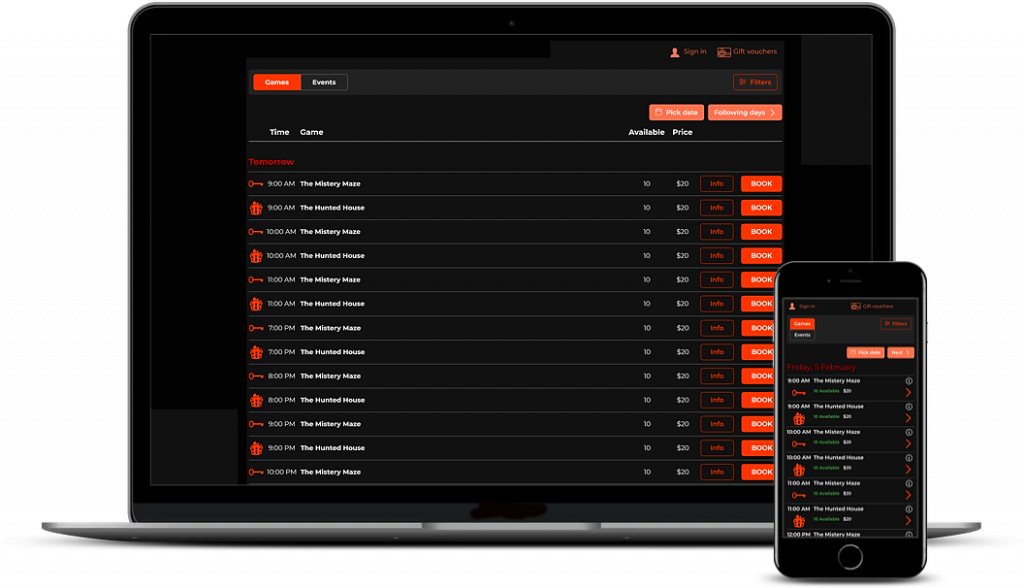
Begin the process of expanding your escape room business today. Start planning by downloading the template and observing the impact of a well-crafted marketing strategy. Additionally, it is important to note that the utilization of tools such as Bookeo can enhance the efficacy of your marketing endeavors and simplify your operations.
